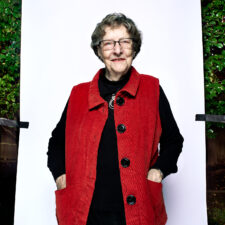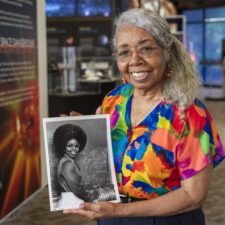A report by Zippia noted that in 2019, only 28% of Software Programmers were women, and they were paid on average $4,500 less a year than their male counterparts. Statista reported that in 2021, only 5% of Software Developers were female. While we made many strides in gender equity in STEM, both of these surveys, and many others, show the clear gap that still exists in the world of computer science and programming.
So much of our world today is programmed. There are some obvious ones we think of immediately – our phones, video games, the internet. But things like your thermostat also include code! As our lives become increasingly digital, it becomes more and more important to bring people of all backgrounds and experiences to the table to create the code that shapes our world. In honor of the beginning of Women’s History Month, I wanted to share some incredible female programmers who have shaped our world and offer some resources for our future coders out there.
Elizabeth Feinler

If you have ever typed ‘.com’ or ‘.org’, you have Elizabeth Feinler to thank. From 1972-1989, she ran the Network Information Center at Stanford Research Institute. She oversaw the use of all internet addresses before commercial companies came into being. She was in charge of every domain name during that time. She also worked with colleagues to come up with naming schemes for domain names. That’s where naming schemes like ‘.com’ and ‘.edu’ and ‘.org’ came from.
Grace Hopper

Grace Hopper was a Navy officer who was involved with the creation of the first-ever computer, the first commercial computer, and the first universal programming language. As if all of that isn’t enough, she also coined the word ‘debug.’
Dr. Radia Perlman

Dr. Perlman’s spanning tree algorithm (STP) is credited with being the founding idea behind so much of the internet and networking. This algorithm solved an early problem that faced computers when they tried to share data. They would get caught in loop which prevented proper data sharing. For her work, Dr. Perlman is often called “the mother of the internet.”
Valerie Thomas
 At NASA, Valerie Thomas managed the development of the image processing system for the first satellite to ever send images from outer space. She also led a team that combined NASA’s forces with the USDA and NOAA to demonstrate the ability of space technology to do things like predict wheat yield on Earth.
At NASA, Valerie Thomas managed the development of the image processing system for the first satellite to ever send images from outer space. She also led a team that combined NASA’s forces with the USDA and NOAA to demonstrate the ability of space technology to do things like predict wheat yield on Earth.
These are just a few of the many women who have shaped and continue to shape our world. There are women all over the country and the world working to make our lives more fun, safe, efficient, and meaningful with the power of code. Who’s to say you won’t join them one day?
To any girls curious about coding, below are some resources to get you started. I also urge you to reach out to women working in the field today! Ask them what they do, what they like about it, and what advice they would give you. You can reach out to community partners (like the Connecticut Science Center) to find programs or events that could help you on your path.
Resources:
The name here is pretty telling! This organization is committed to closing the gender gap in computer science. They offer summer camps, clubs, and future career programming to girls grades 3-college. There are 207 CT-based clubs listed on their website.
https://www.blackgirlscode.com/
As big as the gap is for women in general, it is bigger for women and girls of color. Black Girls CODE is a global effort to create opportunities in tech for Black girls. In addition to web and mobile design, they have programming in game design, virtual reality, AI, and 3D printing.
Code.org is a fantastic resource for fun, free coding exercises for anyone. This page specifically highlights how to motivate and support girls in your life who are interested in coding. There are videos of female professionals and tips on how to engage girls.


